Murder of the Imperial Family - Finding the Romanov Remains by Ryabov
Excerpts from a TV interview in 1989
Orginally published in The Orthodox Word, no. 153 1990
(This was published before the remains were exhumed. I was extremely fortunate to visit with Geli and stay with Ivanov for a week around the same time, and hear this story directly from Geli in greater detail. Bob Atchison)
Writer Geli Ryabov announced to this interviewer that he had found what he believes are the remains of the Russian Imperial Family; Nicholas II, his wife Alexandra and their five children, along with four servants, who were all shot in the basement of the Ipatiev hous, in Ekaterinburg during the night of July 16-17, 1918 by a Bolshevik firing squad.
Here from his apartment in Moscow, Geli Ryabov talks about these "new findings":
GeneralIy speaking, the Romanov family, from the very beginning, is a tragic family, duc to many and various causes. The Tsar-Liberator (Alexander II) was blown up by the so-called "Narodnaya Volya" "People's Will" revolutionary group in 1881. His only hope, his eldest son Nicholas, died in Nice in 1865. All the hopes of the enrire b.mily had rested on him. Rur thtre was another son, Alexander, and quire an astonishing thing happened. Alexander married rhe fiance of his late brother - the Danish Princess Dagmar. And ir was from this marriage thar the future Tsar, His Majesty Nicholas Emperor of all the Russias, was born, Nicholas II and Her Majesty Empress Alexandra had an heir - the Tsarevich Alexis, born in 1904.
...I was first introduced to this subject in 1952, whcn I began to wonder, not so much why the Romanovs disappeared (this is a separate subjcet), but how. So I started investigating. Actually, in 1952 I only touched on the subject. I saw the faint photographs in Sokolov's book cntitled The lvlurder of tbe Tsar's Family. In 1967, the anniversary of the October Revolution, I read in Komsomohkaya Pravda the story of how it had all transpired. And some ten years later, in 1976, I went to Sverdlovsk (Ekaterinburg) on personal business. I was asked to meet the Sverdlovsk police to discuss with them the subject of the movie "Heirs of the Revolution", of which I was a co-author. While we were still on the platform of the train station, I asked one of the police officers sent to meet me, to take me to the Ipatiev house, where the Romanovs had been murdered. I don't know why I said that. They were surprised. It was already in the dark of night; in the hotel I just couldn't sleep. I went to the window. I could see the steeple of the Cathedral of the Holy Resurrection piercing the horizon. Somehow I understood - I guessed - that the Ipatiev house was just there. I left the hotel - it was four in the morning. I went there, and I wasn't surprised to discover that the Ipatiev house really stood there, just as I had thought. It was a darkish mansion, one-and-a-half stories. Behind it was an overgrown garden, surrounded by a fence. I walked around that house the entire night. Strange, astonishing thoughts assaulted me; I cannot even say what they actually were. I was in a strange, half-mystical state. In the morning, the police officers came to the hotel to bring me back to the Ipatiev house. They showed it to me in its entirety The rooms in which Yurovsky stayed, the family of Emperor Nicholas II lived, the Grand Duchesses, Eugene Botkin and all the rest. Then we went down to the crypt; and at the place where the partition once stood, where the Romanovs were shot, the police officer said, "It is precisely here - this is the place which should interest you the most."
Sometime around one in the morning, already on the 17th of July in 1918, Dr. Botkin, acting on the order of Yurovsky, began to wake the Imperial Family and all the rest of those who were there. There were eleven persons. They were. Nicholas II and his wife Alexandra, their children Alexis, Olga, Tatiana, Maria and Anastasia; the chambermaid Anna Demidova; the cook Ivan Kharitonov; and the butler Alexis Troup. These eleven persons were awakened and escorted by Mikulin and Yurovsky down to the first floor and into the yard. Then they re-entered the house through the second door, taking the long passage to Vosnesensky Lane. Leaving the mansion, they entered the room on the left, which had been specially chosen for that kind of an act. Yurovsky and his men were of course much more anxious at that point than the family, which was not aware of what was to happen, At the chosen moment, Yurovsky ordered the entire firing squad to enter and said, "Nikolai Alexandrovich, your relatives abroad wanted to save you but they did not succeed, and so we ourselves are now forced to shoot you." . . . Yurovsky shot him in the breast. Since everyone's role was assigned in advance and everyone knew who he had to shoot, the firing took only one minute. During the course of one minute around a hundred bullets were shot from eleven guns of various types. The air was filled with smoke, though the gunpowder itself was smokeless. Blood was spilling on the ceiling, the walls and the floor. People were falling one after another. The first ones to fall were His Majesty the Emperor, then the Empress and the heir to the throne, and the daughters, and all the rest. All of them, then, experienced all that horror during a few seconds. Terrible female screams rose up and then the shooting of which I was speaking began and everyone fell to the ground. Even then they kept on shooting, aiming at their heads and hitting them with bayonets. They dragged the corpses out to waiting vehicles, put them inside one - a special type of Fiat, an Italian make - and placed them on specially prepared felt, spread over the floor of the vehicle. These dead were then taken to the open pit of a mine shaft and thrown into it. It was necessary for them to take special measures so that they would all just disappear from the face of the earth. Yurovsky gave the order to throw grenades into the shaft of the pit; the pit was deep - ten meters deep. The shaft wouldn't collapse. It finally became obvious to Yurovsky that it wouldn't be possible to hide them there and that they had to find another place. Along the Moscow road he found several pits, ten meters deep, full of water, and decided to bring the dead bodies there and tie weights to them so that they would sink to the bottom. When the vehicle had proceeded some distance from the place where they had been - that is, from the mine shaft - it came to the edge of a swamp. The driver clumsily turned the steering wheel, and the multi-ton Fiat sank into thc ground with its full weight, up to its axles. Behind the Fiat, a hole was dug, right on the road. The naked bodies were thrown in, and containers of sulfuric acid were placed on them. Then the containers were broken by bullets fired from the revolvers and rifles, and the acid burst out. But just before that, Yurovsky had given the order to smash the faces of the corpses with the butts of the guns in order to prevent their identification. This was done.
According to the commonly accepted version of the event, the White Guards were literally two days away from Ekaterinburg by the 25th of July, 1918. Since they did not arrive in time to rescue the Romanovs, and since they (the Romanovs) couldn't be allowed to fall into the hands of the White Guards, this "Banner of the Counter-Revolution" had to be taken out of the way, and the Romanovs were murdered for that very purpose. This is the official version of the story. As for my version, this is what I have found in my own investlgation. It is the following: to start with, there were no White Guards there - let's begin with that. On the 25th of July, 1918, Ekaterinburg was taken from the Bolsheviks by the Siberian army of the socalled "Siberian Socialist Government." Was it necessary to murder the Romanovs because they were a banncr of the counter-revolutionaries? Obviously not, because they were not that. I have studied the newspapers of the White governments of that time, in the North, the West, the East and the South, and found only two or three references to the Romanovs, and in context these were quite sarcastic and indifferent. I would say this, that it is obvious that at the beginning of the February Revolution, to say nothing of the October Revolution, neither the Tsar nor the Imperial Family had any political power whatsoever. Therefore, they (the assassins) were not killing people with any kind of political power; they were killing people whom somebody hated.
Well, there was a need to start a real job. First of all, of course it was necessary to find the graves. While I was still in Sverdlovsk, the first time, ] was introduced to the local site-geologist working in the area. I offered to share in this research. He looked at me as if I were totally crazy. "You've lost your mind," he said. "Sixty years have passed. What can we find on that site? They used sulfuric acid, which could even destroy any evidence of bones. We shall find nothing there. Apart from that, those sites are covered by roads and even railroads. AI! that is buried forever. It could be that there are even houses built on that site. Who knows?" I told him that I would take it upon myself to do the academic research, the study of the documems, and all the rest we could do together. This interested him. He agreed, but shrugged his shoulders in disbelief. I started my research at the special reference section of the Lenin Library and read an enormous amount of White Russian emigration literature on the subject of the murder of the Romanovs. First of all, the book by Nicholas Sokolov, The Murder of the Tsar's Family, and a companion book on the subject by Michael Dietrichs, entitled The Murder of tbe Tsar's Family and of Members of tbe Romanov House in the Urals These books are repetitive, but Dietrichs' book is more detailed, though without the illustrations which are in Sokolov's book. These books gave me the opportunity to review the evidence of all the witnesses, which was very important for me as I am a professional investigator - a police specialist in that area - and I can analyze; I was taught that. Well, of course, Sokolov didn't find anything. Therefore, if I were to use Sokolov's materials I would not discover anything new. There had to be some kind of additional source materials. So in 1978 I went to Leningrad to find Yurovsky's survivors - his daughter Rima and his eldest son Alexander, a retired Admiral. I got from them the facts which later allowed me to find the site we were searching for with the accuracy of a gun sight. Alexander gave me the notes of his father Yakov Yurovsky. These notes were written for the Soviet Government and for the well-known historian of that time, Michael Petrovsky. In these notes were all the facts, which, together with the facts in Sokolov's book, allowed me to calculate distances and determine the exact spot, which I did. After that, I again went to Sverdlovsk and spent an entire year, deeply involved in work with my friends who were helping me. Only then were we able to narrow down our estimates from the rough calcu!ations of square kilometers to thousands, then to hundreds, and then to tens of meters from the spot which had to be the grave. Later in the spring of 1979, we began our practical search. We were probably using methods of the 1920's, when geologists had no special equipment, We rook a water pipe, a few inches wide in diameter, sharpened it and began to insert it over the approximate site of the grave, using a heavy mallet. At first we hit virgin topsoil, undisturbed by human hands, but further down we hit soil which showed evidence of human action. We immersed the pipe every meter down, and soon we were rewarded. At a certain place, the pipe brought forth a few sausages of compressed soil of a dark blue color, oily to the touch. My friends, who were professional chemists, said that this was clear evidence of the action of sulfuric acid on organic matter. On the 30th of May, 1979, we finally discovcred the site, and began to excavate. (Here foIlow descriptions of photos.) Soon we made the first find - the very first one was black-green. .. It was the pelvic bone of Nicholas II. Well, all these finds became quite a collection. . . . Then the skeletons were discovered. To be precise, the skeletons were discovered, but only the skulls were removed from the graves. . . . In the skull of Alexandra there was a big hole nine millimeters in diameter, indicating a shot fired by a high caliber rifle. Another smaIler hole on the other side of the skull showed where the bullet left her head. That was a horrible sight, a terribly horrible sight. As proof that we found the correct site for which we were searching, I can give you supporting evidence and positive verification. First, the bullet shots. Second, the number of skeletons, at least nine; as our hands reached down into the grave, they touched at least eight or nine skeletcns. And the last proofthere were in the grave quite a number of broken containers with sulfuric acid, which Yurovsky used to destroy the bodies. How did the corpses survive? It's quite simple. The corpses survived simply because the acid didn't remain on them long enough. It did its job and went into the soil. Therefore the soft tissues were destroyed but the bones remained intact, and the skeletons were of a black-green color...
I must say that I took them (the skulls) back to Moscow in order to have them inspected more thoroughly, but this (inspection) wasn't possible. So I made records of some details of the skulls, and after a year I brought them back to the grave site and returned them to the grave, placing a cross with the inscription inside: "Those who suffer to the end will be saved," from the Gospel of St. Matthew, chapter 24.
Now quite logically comes the question. What shall we do with all this? But before I answer this question, I feel absolutely convinced that we have to record all proceedings and findings on a documentary film, because the only means we have available to us today is film. I think we have to record the whole story on film. I feel that the story should now be presented in full force, in actual form, fully visible to a!l, to use Mayakovsky's expression. We must begin with the tragic and grievous events which the Romanovs experienced in 1918. We must show Ekaterinburg, the hill which they descended, the automobile in which they rode to the Ipatiev house. All that should be shown with derailed commentary. In spite of the fact that the majority of Soviet viewers have already seen many of these places, I think that the main sites connened with all these events would be an unbelievable revelation, not only to the Soviet people, but to the whole world. What do I have in mind? Well, of course, the route on which the corpses were taken for the last time: the way to Kotyaki, which links the city of Ekaterinburg with the village of Kotyaki on one of the lakes, that soft, transparent, luminous way, by Vv'hieh that terrible hearse, carrying the cleven bodies, passed; and indeed the open pit. Contemporary film techniques will enable us to do it. We can show the place where Sokolov made his findings; all that is still there, intact, and in fact still undisturbed. All that can be seen in a film. And, of course, the most important fact of all, the actual site of the grave. We will show it as it exIsts today. And maybe, with God's blessing, the Soviet Government will make the moral decision to open the grave for scientific experts and will allow the final moral end of an Orthodox funeral; and we shall be able to show that as well. We intend to make this film, so that we can bring an end to this horrible and tragic story.
It seems to me, and to our producer, Anatoly Ivanov, that the final end would be the redeeming of that blood which was spilled as a result of the horror which ruled in Russia during the October Revolution, during the civil war, Stalin's times, and afterwards. We have to reject all that and even cast the dust of it from our feet. There's simply no other way. The redemption of that blood can be accomplished only if the innocent Romanovs, executed without court trial, can be exhumed from that pit and buried with the proper Orthodox ritual in a church funeral. They perished innocently, and they deserve it. And I express a humble hope that our government, our ruling organizations (after all, they are different today), will do that. I think they need redemption from the spilling of that blood - the whole of our nation needs it. Without this, it is simply impossible to go on living.
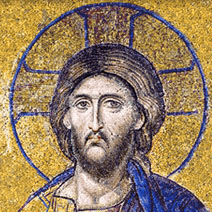
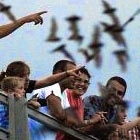



 Imperial Bedroom
Imperial Bedroom Portrait Hall
Portrait Hall Mauve Room
Mauve Room Maple Room
Maple Room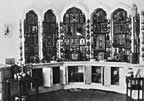 Aleksey's Bedroom
Aleksey's Bedroom Nicholas's Study
Nicholas's Study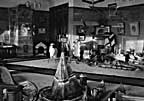 Aleksey's Playroom
Aleksey's Playroom Formal Reception
Formal Reception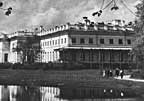 Balcony View
Balcony View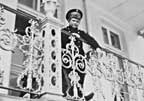 Aleksey- Balcony
Aleksey- Balcony Children-Mauve
Children-Mauve Nicholas's Bathroom
Nicholas's Bathroom Alexandra- Mauve
Alexandra- Mauve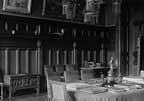 Nicholas's Reception
Nicholas's Reception Tsarskoe Selo Map
Tsarskoe Selo Map